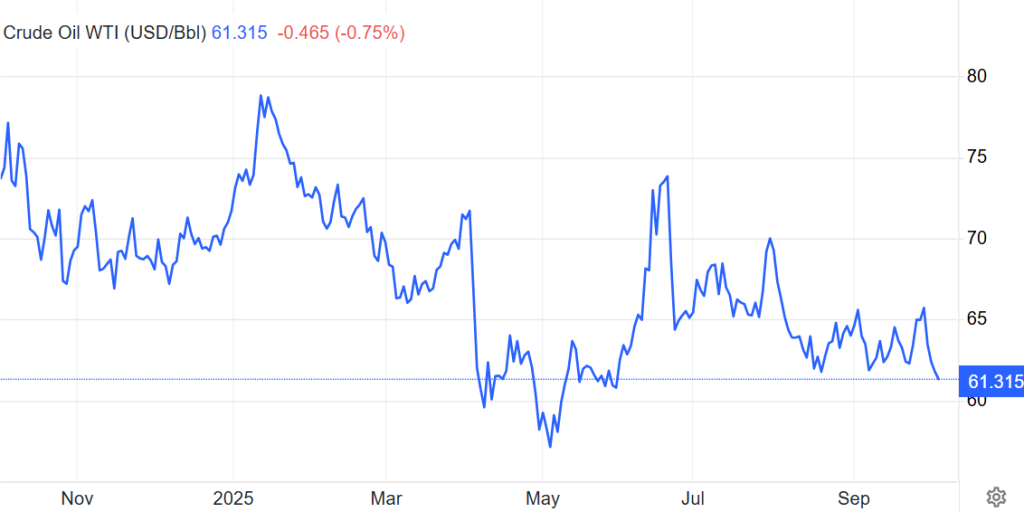- Oil prices rebound modestly, with Brent near $65.50 and WTI close to $62, after three sessions of declines.
- OPEC+ eyes 500,000 bpd output hike, while US inventories rise, reinforcing oversupply concerns.
- Geopolitical risks persist, with potential Russian export disruptions and US-Ukraine cooperation on targeting energy infrastructure.
Crude oil futures remain volatile as traders balance near-term geopolitical risks with concerns about oversupply. Brent crude edged up to $65.50 on Thursday while WTI climbed to $62.00 area, recovering modestly from earlier losses. The rebound occurred amid concerns about a potential disruption to Russian crude oil exports. However, the upside remains capped by rising crude oil inventories and the odds of increased OPEC+ production.

The US government shutdown added more to the uncertainty in energy markets. According to UOB analysts, the third shutdown under President Trump, resulting in furloughs of 750,000 federal employees and delayed data release, could weigh on the Fed’s policy outlook. This could indirectly affect the demand for crude oil.
On the supply front, attention now turns to the OPEC+ meeting scheduled for 5th October, where producers are expected to agree on boosting output by 137k barrels a day in November. According to reports, the move is attributed to Saudi Arabia’s effort to reclaim its market share. Meanwhile, the US EIA reported a build of 1.8 million barrels last week, along with a weaker rate of refinery utilization. Gasoline stocks also surged, reinforcing concerns about a potential decline in demand.
On the other hand, Canada added a domestic angle to the crude oil supply story, with Alberta’s proposal to build a new pipeline to carry 1 million barrels per day to British Columbia to meet Asian export needs. Yet, the opposition by the BC government and First Nation groups highlights political hurdles in Canada’s crude flow expansion.
Geopolitical risks remain a key counterweight. UBS commodity analyst Giovanni Staunovo noted that “there is some concern in the market again that Russian oil could get disrupted.” At the same time, Nissan Securities’ Hiroyuki Kikukawa pointed to safe-haven flows, saying “buying interest emerged as WTI neared its $60 support level, while heightened geopolitical risks and speculation about tighter sanctions on Russian crude also lent support.”
Meanwhile, the unsold cargoes of the Middle East have raised concerns about an emerging surplus, with a supply of 6-12 million barrels per day (mbpd). This, combined with weaker Asian manufacturing data and the Yemen Houthis’ threat to attack US oil companies, underscores a fragile backdrop.


